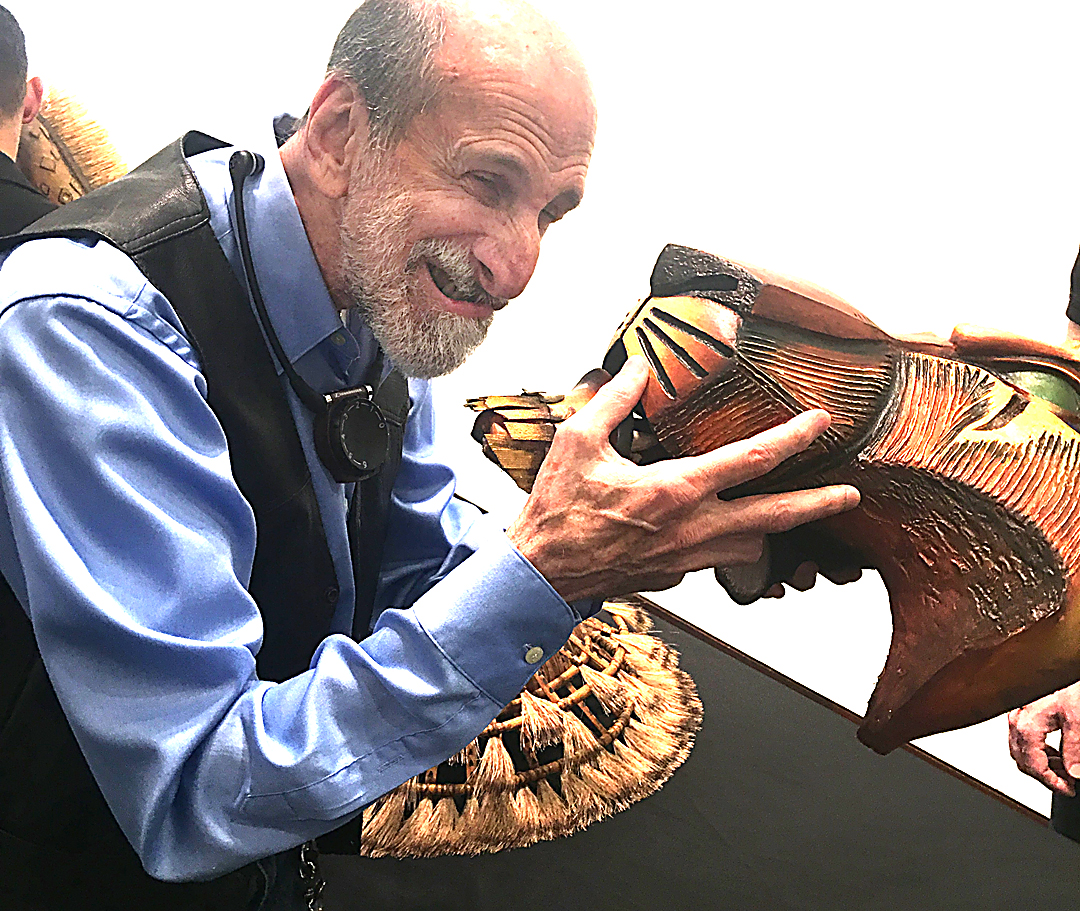Photography by Aida Zuniga
Playbill for The Lion King
Broadway and the West End are the center of the theatrical universe. Theater lovers flock there to see premiers and the best talent on the planet.
Regional theaters, those venues outside the two big Rialtos that dot many of our cities, in order to continue to thrive amidst a plentiful backdrop of movie complexes and a booming industry of storytelling on our TVs, computers and smart phones, must constantly market their shows, staying in touch with their audience and building the next generation of theatergoers. And now that includes the blind and visually impaired community.
Blind and visually impaired theater enthusiasts now have more accessibility to live shows on Broadway and in regional theaters with some of the major venues offering audio description – a hidden narrator describing in real time the action on stage between the lines of the dialogue.
Of course, the best way to build new audiences is to bring children to the theatre. And certainly this includes physically impaired kids. The Arsht Center in Miami is beginning to build the next generation of visually impaired patrons, partnering up with the Bascom Palmer Eye Institute to create opportunities for their blind and visually impaired pediatric patients to attend their mainstage musicals.
The program is called FAB: Feel the Art Balkan, sponsored by The Samuel & Ethel Balkan International Pediatric Glaucoma Center at Bascom Palmer. The recent Lion King musical tour kicked off the FAB program at the Arsht.
CHILD TOUCHES ZAZU'S BEAK
Several of the visually impaired children started off the matinee with a backstage touch tour, comingling with stagehands and visually impaired adult patrons, touching and exploring some of the masks, costumes and puppets used in the performance.
STEVE AND CHILD FEEL HYENA'S TEETH
STEVE FLUFFS SIMBA'S MANE
PUPPETEER EXPLAINS THE WORKINGS OF ZAZU AS STEVE EXAMINES IT
After the touch tour and everyone had claimed their seats, wireless headphones were distributed to the kids and grown-ups. And the narrator went to work.
At top of show, Pride Rock was described as “pre-dawn with mist and clouds. A huge orange paper sun rises and goes up out of the scene as Pride Rock glides onto the stage. It is about 20-feet tall, rising to a rock platform at the top with stairs going up around the back of the rock.”
As the animals enter, the narrator continues, “An Elephant, operated by 4 ensemble members, 1 person in each leg, is followed by a baby elephant. The two giraffes are portrayed by one actor apiece. They each wear a patterned body suit, with a long neck headdress. The actor’s back legs are on stilts about two feet tall. The actors are bent slightly forward and their arms are leaning on sticks about four feet long that serve as the front legs, complete with hooves on the ends.”
This is all detail previously absent from the mind of a blind member of any Lion King audience.
Now the jungle: “Green, lush fronds and palm trees appear, made out of people, and four “grass dancers” with a ride of green grass on their back. Later, a lush jungle of jewel tone flowers, palms, and ferns appear, also created by dancers in elaborate costumes with tall headpieces.”
Speaking of costumes, the audio description brought more color and dimension to the ear.
“First to appear is Rafiki, a baboon, who is spiritual guide of the Pride Lands. She wears a colorful outfit with a raffia skirt with streamers and various implements on a belt...She has very long fingers, which she uses to make dramatic gestures. On her head is a tall headpiece, and she walks with a tall walking stick, with a round gourd tied to the top.”
Mufasa, Simba and Scar “have masks which are worn as headdresses. This makes them taller and more regal when the actors stand up straight, but when they bend forward, the headdress/mask leads and makes them look like they are stalking or pouncing.”
“Zazu is a white hornbill bird puppet with a long moveable and extendable neck and wings. He rests on the arm of his human handler, who is dressed in tuxedo-like robes in shades of blue, black and white that look like feathers, including tails. On his head is a dark blue bowler hat, and he wears pointed bright orange shoes.”
We hear that the three hyenas “wear gray suits with darker gray spots. The hyena heads are on sticks pocketed on the costume front. They have a mangy, intimidating appearance, except for Ed, who is more cartoonish, with a long pink tongue hanging out of his mouth.”
Of course, short single sentences between the dialogue help in visualizing the action on stage. We know the hyenas start a wildebeest stampede into the gorge threatening Simba, we become aware that Simba blocks Scar’s attack as Scar falls from the cliff and we realize when Rafiki presents Simba and Nala's newborn cub.
STEVE GROWLS AT SCAR
So, blind and visually impaired children and adults get the picture!
The Lion King musical now sports the crown of Broadway’s highest-grossing show. If the audio touch tour and description technology will be brought to more visually impaired children and adults, then we will indeed have hakuna matata.
Steve Gladstone
The Blind Dude







